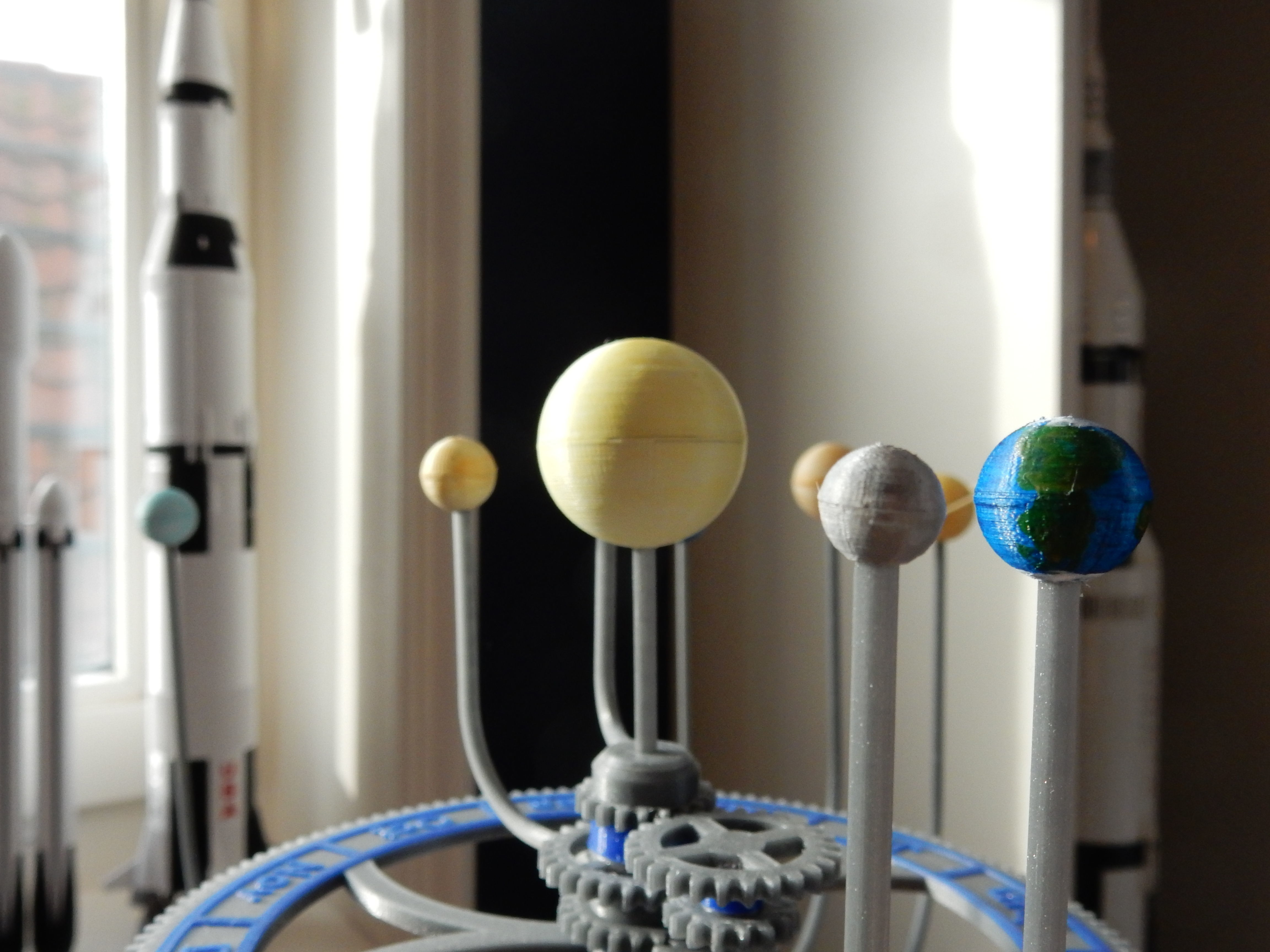
Solar System Planetarium 3D print model
This model displays the motion of the 8 planets of our solar system and the Moon. It is hand-operated via a crank at the base, setting all the bodies in motion. Each turn of the handle equates to 30 Earth days of motion.
The model is fully 3D printed, thus it does not require any additional materials. Only a knife, sandpaper and glue are needed for post-processing and assembly. The planets can be painted by hand.
The gear ratios were determined using a dedicated Python program to achieve an error of less than 0.01% for the planets and 0.04% for the moon. The model was designed using Fusion 360 and thorougly tested for proper gear meshing and tolerances. The model was printed using a Pruse i3 mk3s, so results may vary, but a conservative approach was made during design to make sure it would work on most printers. The model stands about 20 cm tall and is 40 cm in diameter. The maximum print volume required is 205 x 175 x 145 (XYZ). Note that the pegs holding up the planets can be substituted by 3mm metal tubes or rods, reducing the required print volume to 145 mm cubed.
The model consists of many parts, which can be split into 2 groups based on their print settings. Note that all parts can be printed with a standard 0.4 mm nozzle. The model in the pictures was printed using PLA. This is highly recommened due to its reliable print quality and great bed adhesion. No supports are needed.
The first group consists of the following parts
- Base Feet x4_Base
- Main Base Body_Base
- Main Axle
For printing these, the following settings are recommended:
- 0.2 mm layer height
- 2 perimeters
- 15% rectilinear infill For the 'Main Axle', a 2 mm brim is used.
For all the remaining parts, the same settings can be used, but decrease the layer height to 0.1 mm to increase the print quality. Consider turning off elephant foot compensation (if available in you slicer) for the gears, as it cause the first print layer to fail.
In the pictures, the calender dial is a two colour print. This was achieved by changing the filament colour at 3 mm, greatly increasing the visibility and appearance of the markings.









